We sincerely hope that you, our readers, will greatly enjoy this article about these 5 Fully Fabulous Frogs that we present to you herein. We certainly enjoyed compiling the information for you. May it serve to edify and enlighten you as to these intriguing wonders.
Obviously, though, these few represent the barest handful of the species of frog on earth. Currently, more than 5,000 such species are known to science. After reading of these particular animals, we invite to peruse our pages for other articles on related species.
Wallace’s Flying Frog
Wallace’s Flying Frog Facts
- Leading off this article about 5 Fully Fabulous Frogs the fantastic amphibian with the unique ability, the Wallace’s Flying Frog.
- The very name of this intriguing creature serves to indicate just how extraordinary it is. The common term derives partly from its unique ability, and also from the name of the individual that first discovered it. That was British biologist, Alfred R. Wallace.
- The generally used named for this minuscule marvel of Nature quite thankfully remains much easier to remember than its scientific name, however. That tongue-twisting term, typically only used by professionals, is that of Rhacophorus nigropalmatus.
- Not surprisingly, the name’s somewhat misleading, since the animal does not actually fly. It does, however, glide short distances from tree to tree. Though not, again to one’s astonishment, the only known frog to possess this ability, it’s among the largest.
- The exact extent of the population of the Wallace’s Flying Frog continues to elude researchers. This occurs due to the fact that sightings happen infrequently. Experts further remain undecided as to whether this indicates a small population or not.
- For the moment, however, pending more information, the IUCN lists the remarkable and distinctive creature as Least Concern. This status, while subject to revision, presently appears on the organization’s published Red List of Threatened Species.
- The fascinating animal nonetheless faces several clear threats to its continued existence. Ongoing habitat loss now represents an imminent danger to it. Its greatest peril, however, now comes in the form of the effects of escalating climate change.
Wallace’s Flying Frog Physical Description
The impressiveness of the aptly-named Wallace’s Flying Frog does not originate solely with its aerial abilities. Its size and appearance both also serve to merit interest in the wonder. In fact, it constitutes a slightly larger than average variety of frog.
The amazing amphibian further displays the physiological characteristic of sexual dimorphism, like many of its kin. In its specific case, this trait manifests itself in the fact that females, averaging 3.9 in (10 cm) in length, attain a slightly greater size than males.
Most people generally consider the Wallace’s Flying Frog to be highly photogenic, and rightfully so. The colors the animal presents typically include a bright green on the back. It also, however, usually displays either yellow or a pale white on the underside.
It also evolved over-sized webbed feet that it utilizes to glide from tree to tree. The eyes, meanwhile, grow quite large, and possess striking horizontal pupils. Not stopping there, the species also has large toe pads, which help it cling to trees as it lands from its flight.
- Kingdom: Animalia
- Phylum: Chordata
- Class: Amphibia
- Order: Anura
- Family: Rhacophoridae
- Genus: Rhacophorus
- Species: R. nigropalmatus
Wallace’s Flying Frog Distribution, Habitat, and Ecology
The remarkable Wallace’s Flying Frog, in fact, actually inhabits a moderately broad section of the world, at least when compared to related species. That habitat range, as it currently stands known, extends from the Malay Peninsula to western Indonesia, in Asia.
Within that somewhat extensive zone of habitation, though, it displays quite specific preferences for where it appears. To the knowledge of researchers, it only inhabits regions of rainforest, for starters. Even there, though, it specifically limits its range.
The amphibian does not seem to reside at altitudes of greater than 1,970 ft (600 m) above sea level. Yet another habitat requirement remains the local presence of either small pools of fresh water or slow-moving streams. These it requires for its evolved breeding habits.
The Wallace’s Flying Frog spends the majority of its life in the trees, descending only to mate and lay eggs. Its known diet, meanwhile, consists entirely of a variety of small insects. Finally, its only known natural predators seem to be various arboreal snakes.
Wood Frog
Wood Frog Facts
- Next up among our choices for inclusion in this compendium of 5 Fully Fabulous Frogs comes the medical marvel known as the Wood Frog.
- This unassuming seeming creature holds the common name for an understandable reason. Its scientific name, however, remains the complicated term of Lithobates sylvaticus. By either name, though, it’s a much more complicated animal than it seems.
- In point of fact, this truly fascinating amphibian serves as the focus of great attention among many researchers. This degree of attention occurs due to the nature of a truly astonishing evolutionary adaptation displayed by this natural wonder.
- To the complete astonishment of those who first realized it, this frog somehow evolved a method of surviving being partially frozen in winter. This marvel of Nature has, entirely naturally, developed special chemical reactions in its body that allow this.
- This process prevents complete freezing of the water in the cells and bloodstream of the Wood Frog from occurring. As long as no more than 65% of the water in the body freezes, the creature survives. This remains a unique adaptation among its kind.
- Quite fortunately, its population base appears to be stable, at least for the moment. As a result, the IUCN presently lists it as Least Concern on its Red List. The species does, however, remain at risk due to the ongoing and escalating effects of climate change.
Wood Frog Physical Description
Though sincerely incredible in some ways, the Wood Frog nevertheless represents an average-sized variety of frog. This example of the resourcefulness of Nature also, like related species, displays a slight degree of the physiological characteristic of sexual dimorphism.
In its case, this trait manifests itself in terms of physical size, not appearance. As a result of this natural tendency, females of the species attain a slightly greater length than males. Overall, however, this length averages between 2.0 – 2.8 in (0.8 – 1.1 cm).
The natural coloring of the Wood Frog further serves to make one mistakenly believe it to be a simple form of amphibian. That’s because this aspect of its nature presents a pattern roughly shared by a great many other frogs throughout the world.
The adult individual typically appears dark brown or varying shades of tan on the upper body. The underside generally shows a pale green or yellow. This animal further, though, possesses the ability to alter its coloring at will as well, within this range of colors.
- Kingdom: Animalia
- Phylum: Chordata
- Class: Amphibia
- Order: Anura
- Family: Ranidae
- Genus: Lithobates
- Species: L. sylvaticus
Wood Frog Distribution, Habitat, and Ecology
Fortunately for it, the impressive Wood Frog inhabits a relatively large area of the globe. More precisely, this natural habitat range consists of a broad range of North America. In fact, this extends from the southern Appalachian Mountains, near the east coast, to Alaska.
The unique amphibian is almost exclusively forest-dwelling by nature, however. It also primarily breeds in woodland vernal pools and freshwater wetlands. When not breeding, though, it may be in or near moist ravines, upland habitats, or freshwater swamps.
Most commonly, adult individuals of the Wood Frog spend the summer and spring in these and various other similar habitats. But, during the fall the animals migrate to neighboring uplands. This is where the majority of this species lives out the winter season.
It also primarily inhabits the upper layer of soil, just beneath layers of leaves. The amphibian further evolved as principally diurnal in nature. Consequently, it rarely emerges at night unless disturbed. At that time, it feeds opportunistically on small invertebrates.
Indian Bullfrog
Indian Bullfrog Facts
- Placing third in this compilation of 5 Fully Fabulous Frogs, though only due to random selection, comes the marvel known as the Indian Bullfrog.
- Look at the brilliantly contrasting colors of the amphibian understandably known by the informative name. It doesn’t look like it could be real, does it? This gorgeous fellow does, however, represent a relatively large and colorful species of a bullfrog.
- Most unfortunately, this highly unique animal also remains endemic to a severely limited portion of the world. It now seems to have become introduced into Madagascar, though whether intentionally or not currently remains undetermined.
- There, many people also now consider it to be an invasive species, largely due to its voracious appetite. In some areas in which it appears, though, including the country of Thailand, the marvel of Nature is actually a commercially farmed species.
- For the moment, the fascinating Indian Bullfrog holds the fortunate classification of a species of Least Concern with the IUCN, on their Red List. This fortunate status exists largely due to the widespread habitat range, and large population, of the animal.
- Regrettably, however, this status seems likely to change, given, to no great surprise, the rapid degree of habitat loss due to human expansion in its native range. It also now faces the pressing danger of the ongoing effects of climate change.
Indian Bullfrog Physical Description
Quite impressively, the aptly-named Indian Bullfrog fully merits appreciation for more than just its distinctive appearance. That statement holds true due to the fact that it also represents one of the larger of the known varieties of frog known to man.
It does, however, display a degree of sexual dimorphism. In its case, though, this trait manifests itself in two separate ways. The first of these is in simple size, with males averaging slightly smaller than females. An overall body length equals roughly 6.5 in (16.5 cm).
Colors can vary somewhat significantly between individuals, but olive green and dark yellow predominate. Many specimens further display darker patches. It’s in the coloring, though, that it shows its other manner of gender-based differences.
The male Indian Bullfrog consciously changes its colors to primarily bright yellow during mating season, to attract females. The large bright blue sacs under its jaw also serve to also attract females. Both sexes, however, possess nearly fully webbed toes.
- Kingdom: Animalia
- Phylum: Chordata
- Class: Amphibia
- Order: Anura
- Family: Dicroglossidae
- Genus: Hoplobatrachus
- Species: H. tigeriuns
Indian Bullfrog Distribution, Habitat, and Ecology
The Indian Bullfrog inhabits a comparatively broad swathe of the globe, despite the suggestiveness of its common name. While its range does include the country of India, the creature actually exists in many regions throughout the continent of Asia.
The great majority of its population dwells in the countries of Bangladesh, Nepal, Pakistan, Myanmar, Afghanistan, Sri Lanka, and, of course, India. Smaller known populations of this mighty amphibian further appear in the Maldives and Madagascar.
But in whatever region of the world it inhabits, this work of evolution displays strong preference for its choice of habitat. As an amphibian, these naturally include moist areas, frequently consisting of freshwater wetlands, including man-made paddy fields.
More specifically, most specimens inhabit bushes and holes located very close to the water. From there, it seeks its prey, being carnivorous in nature, like other frogs. Given its size, it primarily preys on small mammals, invertebrates, and even small birds.
The Indian Bullfrog also evolved as primarily nocturnal in terms of its behavioral patterns. Its breeding season, meanwhile, takes place during the monsoon season. Following mating, the female lays many eggs, but sadly, tadpole mortality rates are high.
Vietnamese Mossy Frog
Vietnamese Mossy Frog Facts
- Appearing next in this article about 5 Fully Fabulous Frogs comes one of the masters of disguise of the amphibian world, the Vietnamese Mossy Frog.
- The simultaneously descriptive and accurate term for this unique animal serves as one of the common names for a remarkable amphibian. This marvel of Nature also goes by alternate names, though, including the mossy frog, and Tonkin bug-eyed frog.
- Its official name, however, isn’t easy to pronounce. That remains that of the tongue-twisting Theloderma corticale. But by either of these various names, this amazing animal represents yet another masterpiece of evolution in the minds of many people.
- Quite fortunately, this marvel of Nature appears to be maintaining a sufficient and stable population base. This further seems to hold true throughout the entirety of its natural range. Yet, while its numbers appear stable, it nonetheless has a limited range.
- But, despite the limitations this imposes, the IUCN currently list the Vietnamese Mossy Frog as Least Concern. This status appears on the organization’s Red List of Threatened Species. This presently pleasant situation remains subject to change, however.
- That’s due to the fact that it now faces several threats to its existence. Loss of habitat, due to deforestation, obviously poses a serious danger, along with the international pet trade, regrettably. Its greatest threat, though, likely consists of climate change.
Vietnamese Mossy Frog Physical Description
The incredible Vietnamese Mossy Frog attains its relative fame due to characteristics other than its sheer size. Its most notable feature, as the name itself suggests, is the presence of a dense collection of protuberances and tubercules over most of its body.
The combined effect serves as the source of its most frequently used common name. Its coloring also plays a role in that naming, however. The skin of the creature generally shows a background of green, with various colored spots and markings added to the mix.
Such an astonishing combination of natural factors makes the animal strongly resemble a clump of moss. Given its natural habitat, this provides it with a highly effective degree of natural camouflage. In fact, it’s almost impossible to spot individuals in the wild.
But speaking purely in terms of size, the Vietnamese Mossy Frog remains an average-size amphibian. It further displays a slight degree of sexual dimorphism. Overall, it averages 3.5 in (8.9 cm) in length, with females being slightly larger than the males.
- Kingdom: Animalia
- Phylum: Chordata
- Class: Amphibia
- Order: Anura
- Family: Rhacophoridae
- Genus: Theloderma
- Species: T. corticale
Vietnamese Mossy Frog Distribution, Habitat, and Ecology
Quite sadly for those who appreciate the wonders of Nature, the Vietnamese Mossy Frog only inhabits a small area of the world. More precisely, as the name implies, it mainly exists in the northern portions of the country of Vietnam, in Asia.
Reports of small populations in other regions also exist, though. These other regions include the province of Hainan, in China, and possibly Laos. Wherever the animal makes an appearance, though, it displays decided preferences for its choice of habitat.
Being semi-aquatic in nature, it requires a nearby source of water. But that’s only the beginning. Very specifically, the amphibian has only been seen on the banks of mountain streams, at elevations of approximately 3,000 ft (9.842 ft), or in flooded caves.
This truly fascinating animal evolved, like many of its brethren, as nocturnal in nature. It’s also fully insectivorous in its dietary habits. The frog primarily consumes larger insects, such as crickets, cockroaches, and moths, but will feed opportunistically.
The breeding patterns of the Vietnamese Mossy Frog also seems to be quite specific. This mainly takes place in partially flooded rock cavities. The female typically lays a clutch of 8 – 10 eggs, placed above the water. These generally hatch over a period of 7 – 14 days.
After hatching, the newborn instinctively quickly drop into the water below them. The ensuing metamorphosis from tadpole into frog typically requires around 3 months. The exact lifespan in the wild remains unknown, but estimates place it at 10 years.
Limnonectes larvaepartus
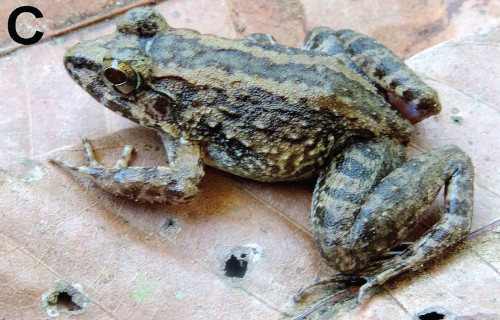
Limnonectes larvaepartus Facts
- Closing out this listing of 5 Fully Fabulous Frogs is one that’s a truly unique member of its Family, the animal named the Limnonectes larvaepartus.
- The recently discovered species known by the tongue-twisting name truly represents a highly unique species of frog. This newly recognized and remarkable animal species does not yet possess a common name, unfortunately. That will likely change, though.
- The amazing creature received its first scientific recognition in 1994, though under a different, temporary designation. Its first formal description and naming took place in 2014, however. That occurred at the hands of a group of three herpetologists.
- Astonishingly, this incredible amphibian also represents one of only four known varieties of a frog to develop fang-like teeth. Currently 6,455 known extant species of frog exist. This animal now represents one of only twelve to reproduce internally.
- To add to its distinctiveness, it is the only known frog on earth to not only conceive internally, but to give birth to fully developed tadpoles. All of the other species of frogs known to science that also give birth to live young deliver froglets.
- The IUCN now lists the Limnonectes larvaepartus as Least Concern on its Red List of Threatened Species. That status may soon change, though, since its numbers seem to be diminishing. It faces many threats, including that of climate change.

Limnonectes larvaepartus Physical Description
Though the Limnonectes larvaepartus fascinates researchers, it does not do so based on size. That’s because the amphibian remains a somewhat diminutive species. Overall, mature adults of this variety of frog attain an average length of roughly 1.5 in (3.8 cm).
This small marvel of Nature further exhibits a slight degree of the physiological characteristic of sexual dimorphism. In its particular case, this trait manifests itself in the fact that females average slightly greater in length than their male counterparts.
Not to be completely overshadowed, though, the shorter males typically possess a stouter body shape. The otherwise impressive Limnonectes larvaepartus nevertheless also remains an overall lightweight, with mature adults averaging only 0.18 oz (5 grams) in weight.
Its appearance, meanwhile, tends to vary between individuals. The upper portions of the body vary in color the most. This portion may be either brownish gray, golden tan or reddish-brown. Its underbelly, though, develops as either cream-colored or yellowish.
- Kingdom: Animalia
- Phylum: Chordata
- Class: Amphibia
- Order: Anura
- Family: Dicroglossidae
- Genus: Limnonectes
- Species: L. larvaepartus

Limnonectes larvaepartus Distribution, Habitat, and Ecology
The diminutive Limnonectes larvaepartus regrettably remains endemic to a highly restricted region of the globe. That small area consists of only the island of Sulawesi, in Asia. It also remains unclear if the creature ever possessed a more extensive range.
It further demonstrates very specific preferences in terms of where it chooses to make its home. The nature of that habitat, unfortunately, makes detailed study of the animal difficult. The living area of the diminutive marvel consists of a very dense jungle.
Even there, however, the Limnonectes larvaepartus only appears in a very specific type of local environment. To the knowledge of scientists, the isolated animal only makes its home near streams, and only in the more mountainous regions of its island home.
The precise dietary habits of this wonder of evolution has not yet been fully determined, due to the inherent difficulties of studying it in detail. Like its many relatives, though, adults feed on the various small insects species so prevalent within its zone of habitation.
After mating, females typically produce about 100 eggs. How the surprising creature achieves internal reproduction actually remains a complete mystery to researchers, however. This occurs because the male possesses no discernible reproductive organ.
5 Fully Fabulous Frogs
It’s our sincere hope that you have thoroughly enjoyed reading, and hopefully learning from, this article about these 5 Fully Fabulous Frogs. We also fervently hope that having done so has left you with either a new or renewed appreciation for such natural wonders.
Sadly, however, many of their related species around the world now find themselves facing dire threats to their survival. The same also holds true for thousands of other species. We must do all that we can to protect and preserve these highly unique creatures.
Check out our other articles on 5 Vividly Vibrant Vines, Earth’s Many Magical Moths, 3 Wondrous African Woody Shrubs, Earth’s Many Magnificent Marsupials
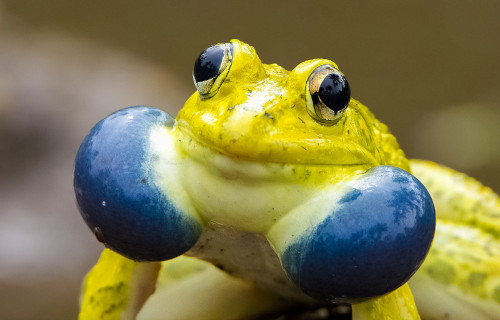
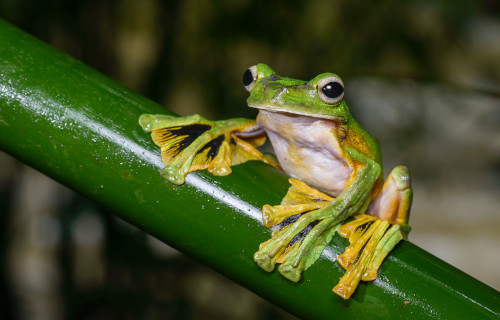
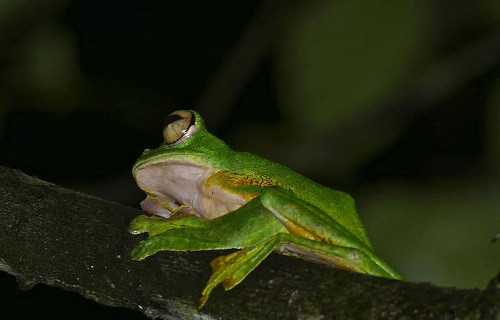
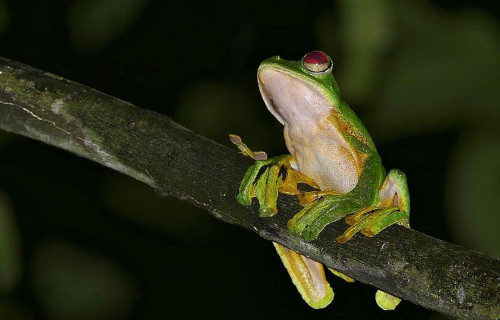
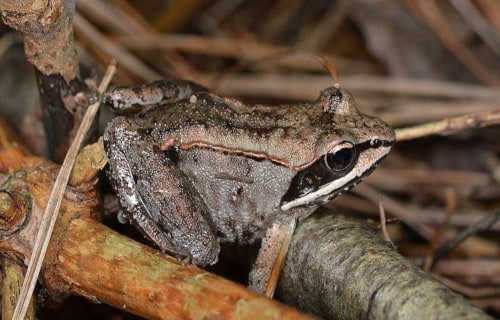
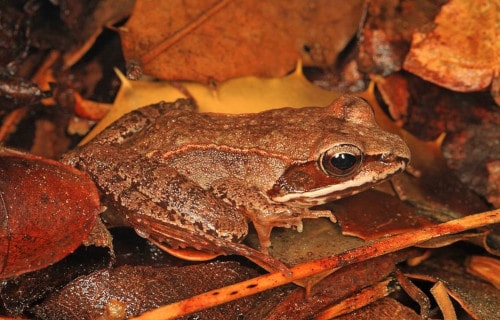
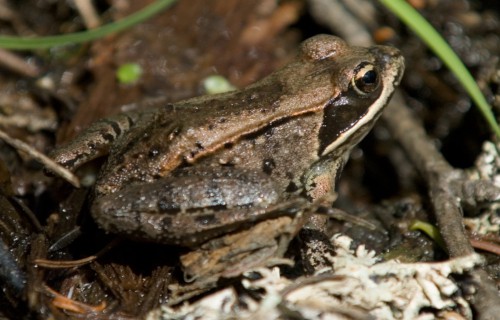
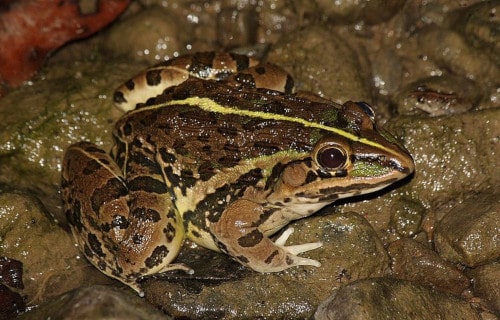

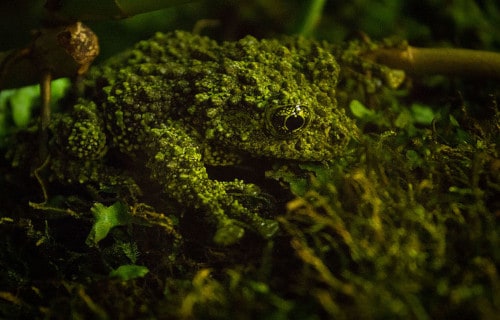
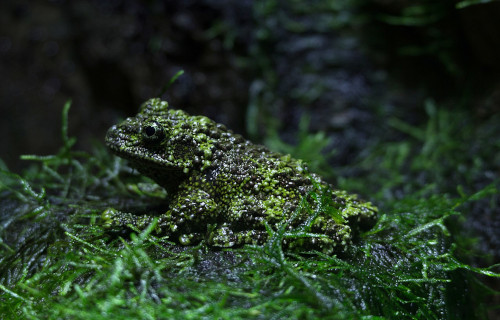










Leave a Reply